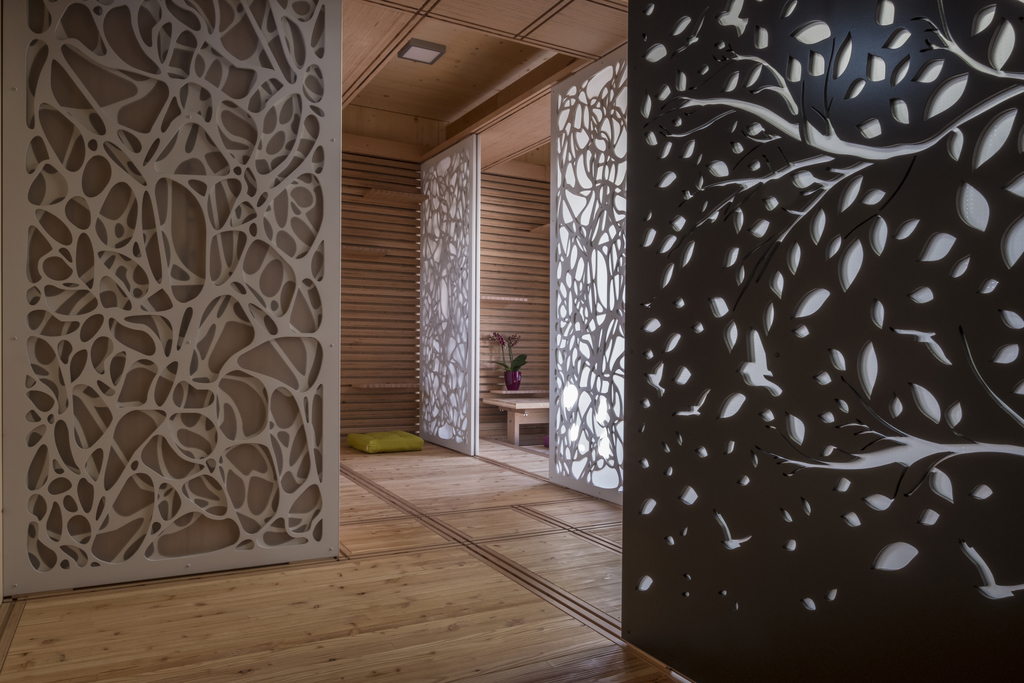Week 11: Indoor Air control and Acoustics
Acoustics in a room are important, and how we as interior designers are going to address it. We need to deal with the noise, but also not make it an unappealing solution. Noise can be the simple sound of footsteps or it can be addressing how conversations will carry through the space. Just like light, noise can refracted, reflected, diffracted, and diffused.
As a designer our goal in a room is to be able to achieve some speech privacy for whoever is occupying the room at the moment. We can do many different things to help control the acoustics. It always depends on the type of room as well.
Partitions are a great way of absorbing sound in a room. They can reach from the ground all the way up to the ceiling creating not only a privacy wall, but it prevents the noise from the entering the other room.
 A partition that also act as walls separating space visually and through acoustics.
A partition that also act as walls separating space visually and through acoustics.
Indoor Air Quality is a huge topic to talk about ever since COVID-19. It has always been a part of interior design, but it has recently become even more of a topic because of the virus that can be spread airborne. IAQ is important because humans spend 90% of their lives indoor, and so what we put indoors for materials can give off chemicals that could be harmful.
When looking at a building and what materials you want to use, you should use the life-cycle assessment. The materials extraction, where it was made, transportation, how long the product will last, and what will happen when it is no longer in use. Interior designers can help prevent VOCs by choosing the green and sustainable option for a product. Knowing our facts about items can help prevent more expensive costs further down the line.
 A picture on what in a residential setting could bring VOCs into the house.
A picture on what in a residential setting could bring VOCs into the house.
The pandemic has made our profession reconsider how to clean and keep a good indoor air quality, but with all of the cleaning supplies it has also brought new VOCs into the picture. In many buildings we were masks that can help prevent particles from being passed, but it does not prevent 100%. Aerosol spray cans help disinfect the areas, but it also puts particles into the air that we breath in. The virus can also latch onto the particle and spread to you. That is why since the pandemic room layouts have become more spacious creating that social distance to help prevent any more unnecessary germ spreading.
https://www.epa.gov/coronavirus/indoor-air-and-coronavirus-covid-19
Emmaline,
ReplyDeleteYour summary of the important factors that must be considered for acoustics was a great start. Partitions are one method of addressing unwanted noise, but there are other factors that need to be discussed.
I liked how you advocated for using the "life cycle" assessment and using green options for materials introduced into an indoor environment. Your diagram on indoor pollutants was supportive.
Your section on Covid-19 and IAQ needs more discussion and information. I would also like to see articles that you used to come up with your findings. This is a discussion that is very import to understand as an interior designer. Total Points 40/50.